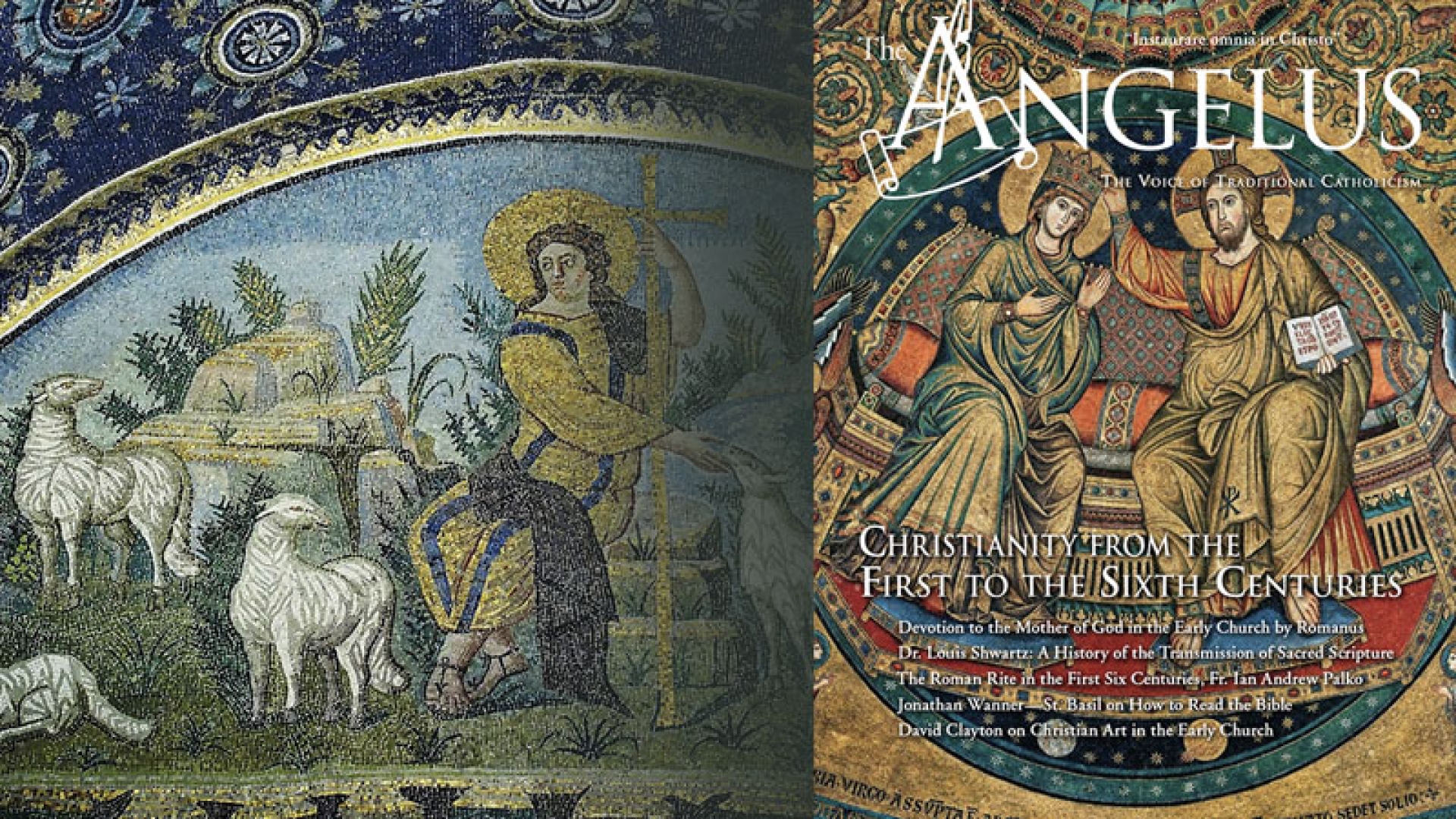
What did the Catholic Church look like during its infancy? We'll find out through a series of articles, touching on the Liturgy, to history, to art, and beyond!
Dear Reader,
At the time of the Second Vatican Council, there was a buzz-word making the rounds: ressourcement. It meant “getting back to the sources” of the faith, re-reading the texts of the Fathers, analyzing ancient liturgical practices. The purpose was to restore the simplicity and freshness of the faith of the early Church, a faith that had supposedly become encumbered by scholastic theology, medieval liturgical practices, and too much of the supernatural.
It was in the name of this ressourcement that we were given the Novus Ordo Mass. The New Mass is meant to resemble Our Lord’s Last Supper. It is so simple that it can be celebrated in twenty minutes. Communion is often given in the hand because, well, was that not how the first Christians received the Eucharist?
Thanks to this desire to imitate the ancient Church, Vatican II and the Conciliar Popes have adopted a pastoral tone in their official documents. They have set aside doctrinal clarity in order to speak to the people in their own language. They have shown appreciation for pagan “religions of the peoples.”
This effort to portray the Middle Ages as being unfaithful to the spirit of the early Church is very questionable. It strikingly resembles the antiquarianism so vigorously denounced by Dom Guéranger and then, just before the Council, by Pope Pius XII. But, even if we granted that the project was well-directed, we should ask: do these efforts actually represent the early Church, in letter and in spirit? What do we really find when we study the first six centuries of the Church?
As shown in this issue of The Angelus, we find a Mass that was the ultimate origin of the Traditional Latin Mass, not the New Mass. We find Catholics extremely serious about dogmatic truths and fighting with all their might to combat heresy and make authentic Catholic teaching clear. We find an effort to judge carefully what was true and good in pagan literary works, along with an outright rejection of what was erroneous, evil and immoral. We find, especially, a strong sense of the supernatural world and the rights of Our Lord.
In short, we find the early Church best represented today in Tradition, not in the Conciliar world. That should not be surprising for a group referred to as “traditional Catholics.”
Fr. John Fullerton
Contents:
FEATURED:
- How Do We Have the Bible?
Dr. Louis Shwartz - St. Basil on How to Read the Bible: Start with the Pagans
Jonathan Wanner - Theotokos: Devotion to the Mother of God in the Early Church
Romanus
CULTURE:
- Context: From Peter to Gregory
Fr. Ian Andrew Palko, SSPX - History: My End is My Beginning
John Rao, D. Phil. Oxon. - Literature: Egyptian Gold or Grecian Gift: The Church and Pagan Literature
Patrick Murtha - Art: How is a Tradition Established?
Prof. David Clayton
FAITH:
- From the Archbishop: The Authority of the Traditional Rite
Archbishop Marcel Lefebvre - Interview: My Path to Tradition
Tom Aspinwall - Scripture: Meditations on St. John’s Gospel—Chapter Nineteen
Pater Inutilis - Apologetics: Popes, Emperors, and Ecumenical Councils
Pauper Peregrinus - Questions & Answers
Fr. Juan Carlos Iscara, SSPX
THE LAST WORD - Fr. David Sherry, SSPX
How to Read This Issue:
Subscribe >>
Buy Individual Issues >>
...or download a PDF Preview Below
